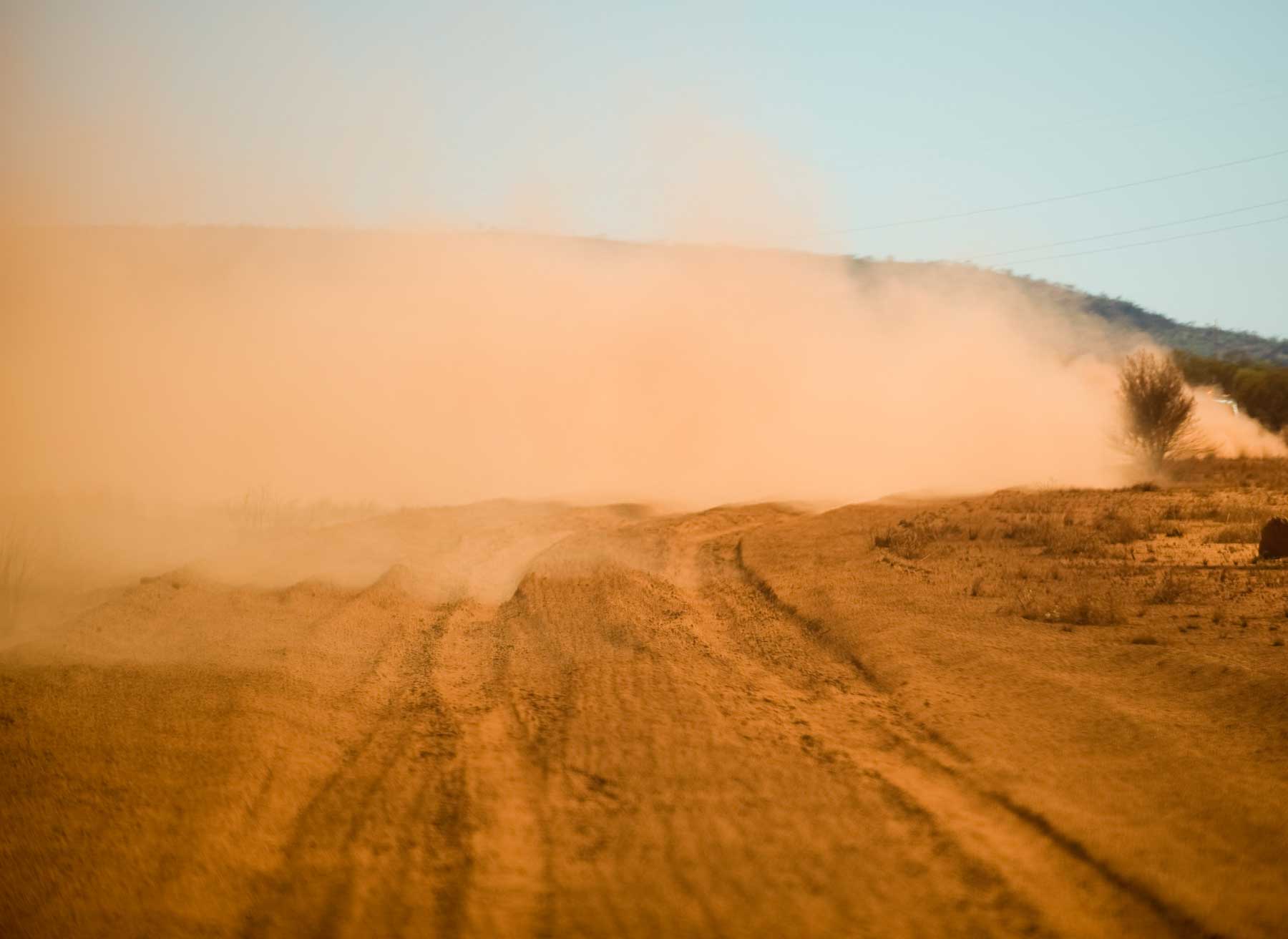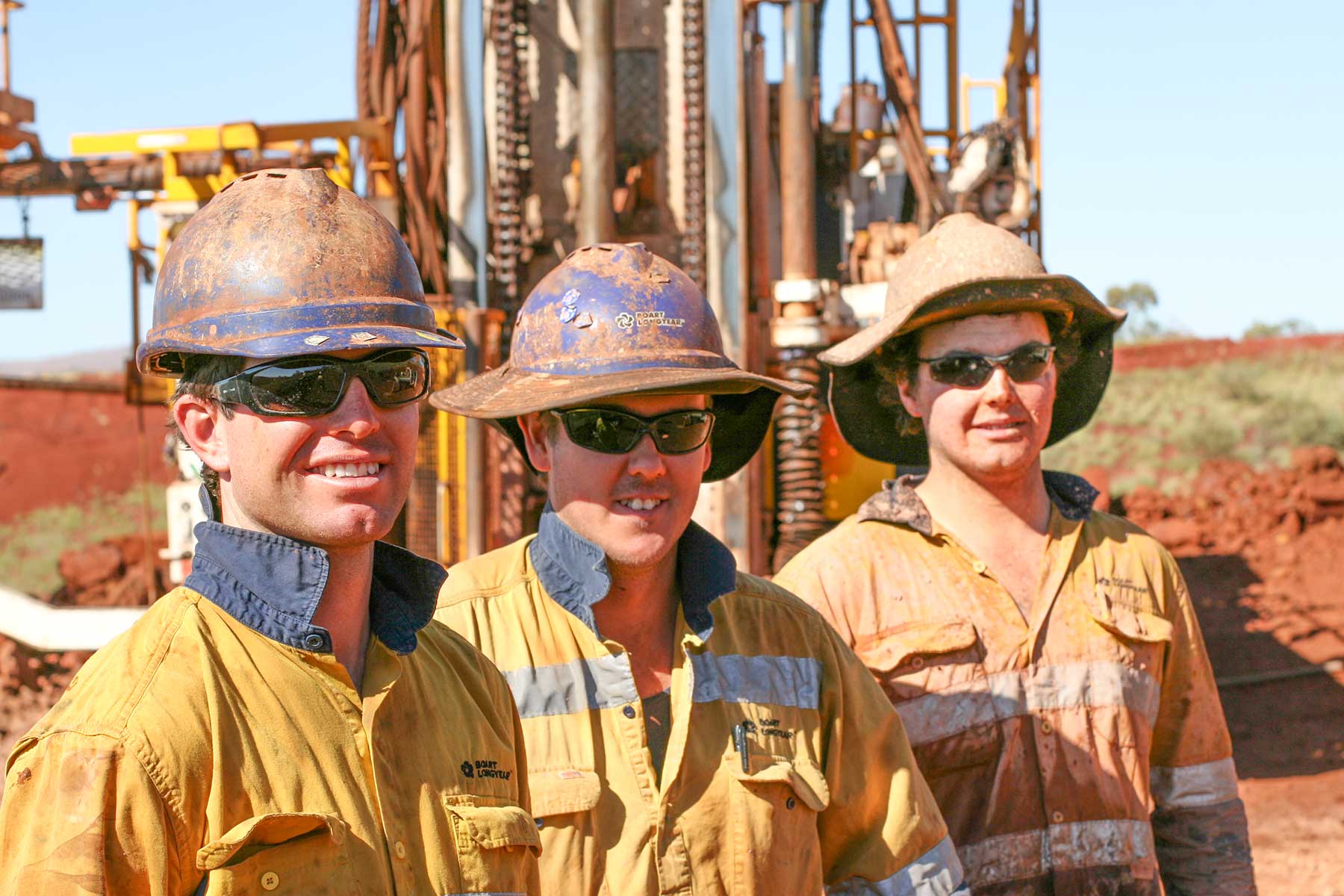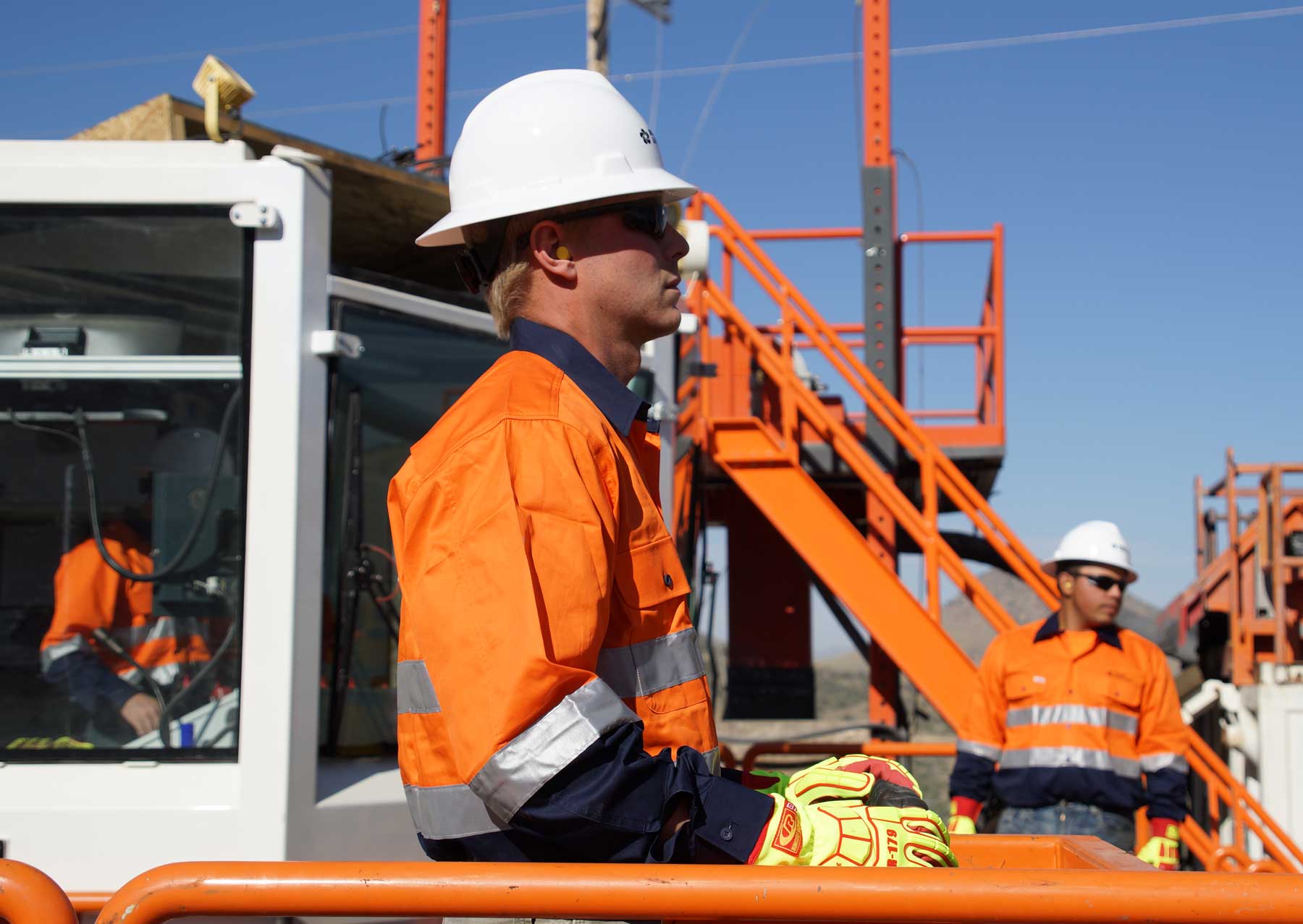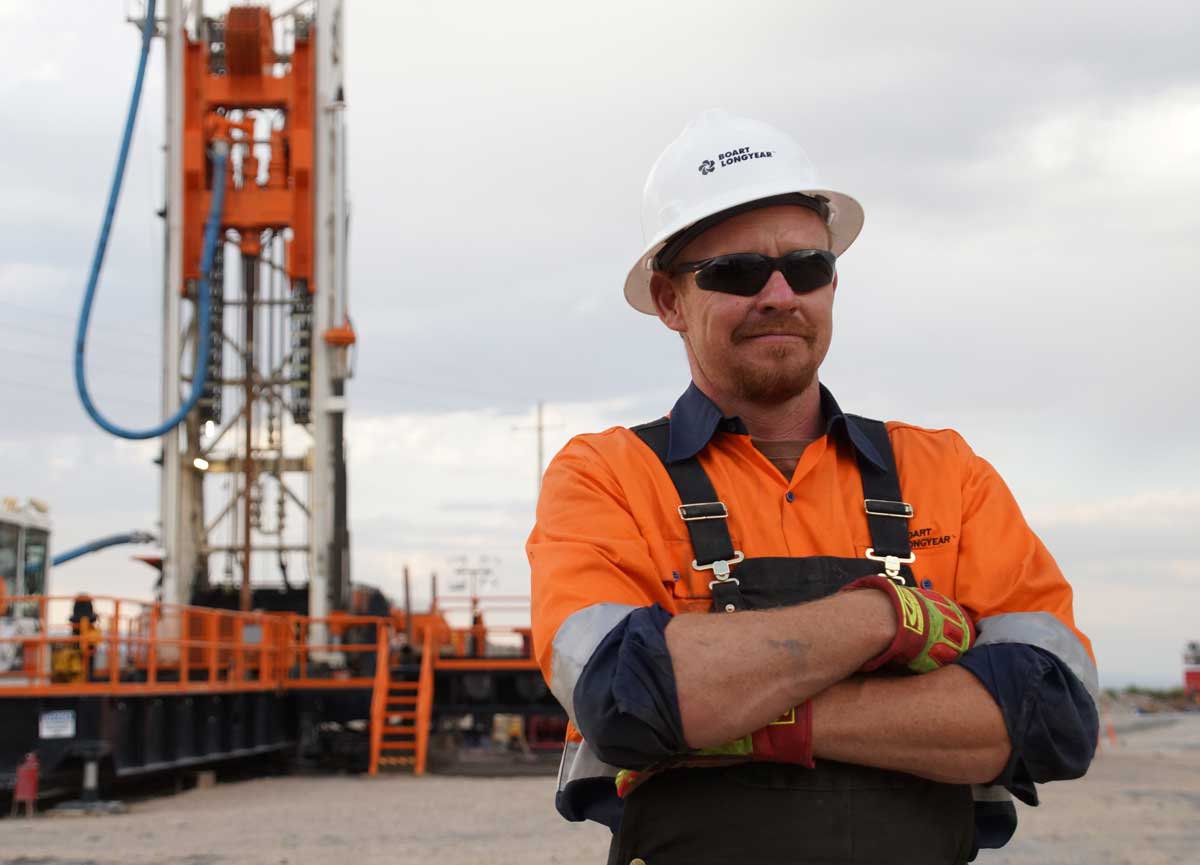FIELD TIPS
juin 25, 2019
Drill Project Success: Seven Tips for Effective Communication
Consider the past fifty years and all the ways people communicate. New technology, systems, and methodologies have changed the course of history. However, one factor has remained the same and has been the overarching key to success – effective communication. Looking at the next fifty years, the future of exploration drilling projects will only be successful with efficient workplace collaboration.
For example, consider the first exploration drilling project that might take place on Mars.
For example, consider the first exploration drilling project that might take place on Mars. New variables such as lack of oxygen, space travel, and extreme climates make for a difficult work environment and unfamiliar conditions. But at the end of the day, what’s most important is a drill teams’ ability to communicate effectively throughout the duration of the project.

Regardless of the place or world where a drilling project is located, success starts and finishes with communication.
Regardless of the place or world where a drilling project is located, success starts and finishes with communication.
Consider projects you have completed… how did communication affect the outcome?
Because we interact and associate with people every day, communication can often be overlooked as an essential factor of success. Here are seven tips for effective communication to help keep your team in check, and ultimately exceed project goals and objectives.
Onsite Communication
1. Ensure all members of the drill crew understand the chain of communication.

Onsite team communication starts with all members understanding the chain of communication. During the drilling process, communication starts and stops at the driller’s controls. The driller is responsible for all procedures and tasks on the job site, and is aware of every process. The driller also prioritizes tasks and communicates this to the entire team.
This chain of communication works because the drill crew knows the driller is the starting point for every process. The driller is the first to observe changes downhole communicated by the drill rig and the tooling, and then he/she transfers critical information to the rest of the onsite team.
2. Ensure all members of the drill crew understand the drilling process.
In the past, it was not uncommon for the supervisor (foreman), driller, and the driller assistant to be the only crew members to understand the drilling process. The rest of the drill crew was only expected to understand the job site specific daily tasks, and general safety requirements.
The old-world argument warns that educating all members onsite can lead to the possibility of leaking job site information and trade secrets to the competition. This antiquated way of operating created an information silo of many under-invested employees.
A 21st-century drilling team understands that it’s more important to hire team members who exhibit honesty and integrity, increasing the level of trust and ensuring critical information remains safe.
Furthermore, a thoroughly educated drill team can interpret and react faster to a drill rig’s communication. These teams anticipate catastrophic rig failures or downhole issues and implement corrective measures. When a drill team is properly trained and understands the drilling process, its members can safely take preventative action to minimize problem events that could potentially impact the project.
3. Align all verbal and non-verbal communication.
Aligning communication starts with all members onsite utilizing common job site terminology and safety language. That language changes depending on the region, rig manufacturer, and level of the crew’s professionalism.
Consider the four-letter word “STOP!”; it’s not uncommon for a drill crew from Wyoming full of horsemen to use another four-letter word “WOAH!” Both terms meaning, ‘halt all activities’ can be utilized safely when team members are aware of both interpretations and use.

Often 80% of all correspondence on a noisy construction site is non-verbal signals. Hand signals are also a beneficial form of communication if everyone is employing the same signs. Operators, along with spotters, must be able to see and signal each other when it’s challenging to hear verbal commands. An experienced drill team can operate safely and effectively for hours on site while speaking very few words and utilizing industry standard hand signals. Crews that use hoisting and heavy equipment operation signals have much lower near-miss and recordable incident rates than crews that use random hand signals like waving to one another.
Offsite Communication
4. Develop a strategic plan for external communication.
Effective external communication starts with knowing which type of customer is being engaged and what information they require. This dynamic changes due to confidential information. The project information relayed to the senior geologist or the project customer will rarely be the same as the information given to the neighboring landowner or the local public.
A drilling crew should have a defined communication plan that starts with asking who the visitor is, so they can understand why they are onsite, followed by directing the visitor to the right representative. The big fear is that ‘the new guy’ might relay incorrect data to the customer or pass on confidential information to a stranger. This is why it’s essential to have a strategic plan for external communications and remind the onsite drilling team of that communication plan daily.

5. Ensure the drill crew is aware of all abnormal operating conditions.
On a “right-of-way project,” good communication begins with the team knowing all abnormal operating conditions for environmental, health, and safety (EHS) considerations and adherence.
An abnormal operating condition could be anything from an environmentally sensitive area, which would limit the hours of operation for equipment that reaches over 80 decibels of noise. If a rancher arrives onsite at dark with a flashlight saying that the drill is interrupting his livestock’s sleep, it is crucial to know the rules before engaging with him.
Often on an established drilling site, this information is presented as a site-specific orientation by the customer. However, on smaller single-hole projects, the only EHS information is found in the contract.
6. Understand the goals and objectives of all parties involved.
Drilling is a disruptive process that changes the location forever. Once a drill starts cutting the ground, the chain of communication quickly expands from the customer, to possibly the neighboring property owner, to corporate officials, to regulatory government agencies. Each party requires different information to properly oversee job completion.
Complex projects in remote locations require a diverse staff of people to complete the job successfully. The men and women involved have a common goal of success, however, they have individual objectives and information to gather before the job is complete. When all parties involved understand their goals, and the goals of others through proper communication, project success increases exponentially.
Listening to Respond vs. Listening to Understand
7. Listen to understand, and don’t listen to respond.
Effective communication is fully understanding what is being said before answering. It’s easy to assume what information the customer wants and have a response ready, but often crucially relative information is lost while listening to respond.
Effective communication requires all parties on a project work together for best results. At the Advanced Rig Technology Conference hosted by the IADC, presenter David Kaplan, a NASA Engineer, spoke about the importance of NASA continuing to utilize pilots when moving humans in and out of space.
He said “You can’t engineer man out of the technology. It will cost you billions of dollars. However, the goal is to give them the right information through effective communication at the right time to make the best decision.”
NASA understands that men and women with the right information, working in collaboration with their team, can outperform and overcome any situation. Communication requires cooperation to be effective just as a drilling project can only be successful when the drill team, customer, neighbor, and regulator all work together.
“The single biggest problem in communication is the illusion that it has taken place.” George Bernard Shaw
Download the Seven Tips for Effective Communication PDF
DOWNLOAD
Media Permission: If you wish to republish this article on your website or in print, please contact marketing@boartlongyear.com for permission. We are happy for you to share our articles, and only request that you cite Boart Longyear as the source and provide a link back where appropriate.
DISCUSSION
-
Really informative post.Thanks Again. Really Great.
-
Thanks for getting me back into reading again. I really enjoyed the stuff you shared in the form of blogs. Keep writing.
-
over 50 dating singlesdating personal ads
-
I really like and appreciate your blog article.Really thank you! Awesome.
-
I was recommended this blog by my cousin. I’m not sure whether this post is written by him as no one else know such detailed about my difficulty. You are incredible! Thanks!
-
At this time it appears like Expression Engine is the top blogging platform out there right now.(from what I’ve read) Is that what you’re using on your blog?
-
I appreciate you sharing this blog post.Really looking forward to read more. Fantastic.
-
Say, you got a nice blog.Much thanks again. Really Cool.
-
Thanks-a-mundo for the article.Really looking forward to read more. Much obliged.
-
I loved your blog post.Much thanks again. Will read on…
-
I really like and appreciate your blog post.Thanks Again.
-
Really informative article post.Really thank you! Awesome.
-
Really informative blog article. Much obliged.
-
Some really interesting information, well written and loosely user genial.
-
You might want to take a look at the first installment of this story if you’retotally new to internet radio.
-
Hey there! Do you use Twitter? I’d like to follow you if that would be okay. I’m absolutely enjoying your blog and look forward to new posts.
-
That is a really good tip especially to those new to the blogosphere. Simple but very accurate infoÖ Many thanks for sharing this one. A must read article!
-
A fascinating discussion is worth comment. I believe that you should publish more about this issue, it may not be a taboo matter but usually people do not speak about these topics. To the next! Many thanks!!
-
What’s up, its nice paragraph on the topic of media print, we all be familiar with media is a great source of facts.
-
Thank you for the good writeup. It in fact used to bea leisure account it. Glance complex to moreintroduced agreeable from you! By the way, how could we be in contact?
-
You have brought up benefit of a fish oil pill very great details, thank you for the post.
-
I do believe all of the ideas you have presented in your post. They are very convincing and will definitely work. Nonetheless, the posts are too brief for starters. May you please lengthen them a bit from subsequent time? Thanks for the post.
-
Could I have , please? ivermectina comprimido modo de usar “At the end of the day, I want to be a role model,” he added. “I want to be a role model to people who are afraid to come out. I want to be there and speak at functions and tell my story.”
-
Great, thanks for sharing this blog post.Much thanks again. Want more.
-
perfect college essays w54vqe learn to write an essay q373rz how to write essay about yourself d30tfn
-
ilo1y3
-
pggpjk
-
This is my first time go to see at here and iam in fact impressed to read all at alone place.
-
8qpwpc
-
10 Basics On Upvc Windows Repair You Didn’t Learn At School upvc window repairs(Promarket.in.ua)
-
9vaszb
-
Thanks again for the blog article.Really thank you! Want more.
-
You could certainly see your expertise in the articleyou write. The world hopes for more passionate writers like you whoaren’t afraid to say how they believe. At all times follow your heart.
-
Hello i am kavin, its my first occasion to commenting anywhere, when i read this article i thought icould also make comment due to this good paragraph.
-
Greetings! This is my 1st comment here so I just wanted to give a quick shout out and tell you I really enjoy reading through your blog posts.
-
hydroxychloroquine update today chloroquine hydroxychloroquine what is hydroxychloride
-
Pretty! This was a really wonderful article. Thank you for supplying these details.
-
Hello! I’ve been following your blog for a long time now and finally got the courage to go ahead and give you a shout out from Dallas Texas! Just wanted to tell you keep up the good work!
-
Valuable info. Lucky me I found your site by accident, and I am shocked why this accident did not happened earlier! I bookmarked it.
-
great post, very informative. I wonder why the other specialists of this sector do not notice this. You should continue your writing. I’m sure, you’ve a huge readers’ base already!
-
Pretty section of content. I just stumbled upon your weblog and in accession capital to assert that I get in fact enjoyed account your blog posts. Anyway I will be subscribing to your feeds and even I achievement you access consistently fast.
-
Interesting blog! Is your theme custom made or did you download it from somewhere? A design like yours with a few simple adjustements would really make my blog stand out. Please let me know where you got your design. Bless you
-
You made some nice points there. I looked on the internet for the subject matter and found most persons will approve with your site.
-
It is really a nice and helpful piece of info. I’m glad that you shared this useful info with us. Please keep us up to date like this. Thanks for sharing.
-
Hello there, You have performed a fantastic job. I’ll definitely digg it and individually suggest to my friends. I am sure they’ll be benefited from this website.
-
Howdy, i read your blog from time to time and i own a similar one and i was just curious if you get a lot of spam responses? If so how do you prevent it, any plugin or anything you can recommend? I get so much lately it’s driving me crazy so any support is very much appreciated.
-
Great – I should certainly pronounce, impressed with your web site. I had no trouble navigating through all tabs as well as related info ended up being truly easy to do to access. I recently found what I hoped for before you know it in the least. Reasonably unusual. Is likely to appreciate it for those who add forums or anything, web site theme . a tones way for your customer to communicate. Excellent task..
-
قهوه گانودرما — دمنوش لاغری دکتر بیز — دمنوش مصفی خون دکتر بیز — سیر سیاه دکتر بیز
-
Hi! Do you use Twitter? I’d like to follow you if that would be ok.I’m undoubtedly enjoying your blog and look forward to new posts.Check out my blog post … Daniele
-
I absolutely love your blog and find many of your post’s to be precisely what I’m looking for. Does one offer guest writers to write content to suit your needs? I wouldn’t mind publishing a post or elaborating on some of the subjects you write regarding here. Again, awesome blog!




